Dorie Hagler is a documentary photographer and social justice activist, whose work has appeared in The New York Times, NYMAG, Sports Illustrated, Forbes, Glamour, People, The San Francisco Chronicle, Chicago Tribune, New Mexico Magazine, and many others. In 2016 Hagler founded me&EVE, a visual social justice movement, which shares finely distilled stories of ordinary women. Her work has been exhibited, commissioned and collected by museums, state agencies, and individual collectors. Hagler is a frequent speaker at Adorama and during warmer months she leads photowalks for New York camera enthusiasts. She spearheaded a photography workshop for incarcerated women at Riker’s Island and is co-producing a documentary film about criminal justice. Hagler’s goal is to use her visual communication and storytelling skills to emphasize the importance of our interconnectedness and shared humanity.
So I sat down with Dorie to discuss her latest project, me&EVE, as well as the grant she has created for women photographers in collaboration with CENTER, which will be judged by Kathy Ryan, the Photo Director at The New York Times Magazine.
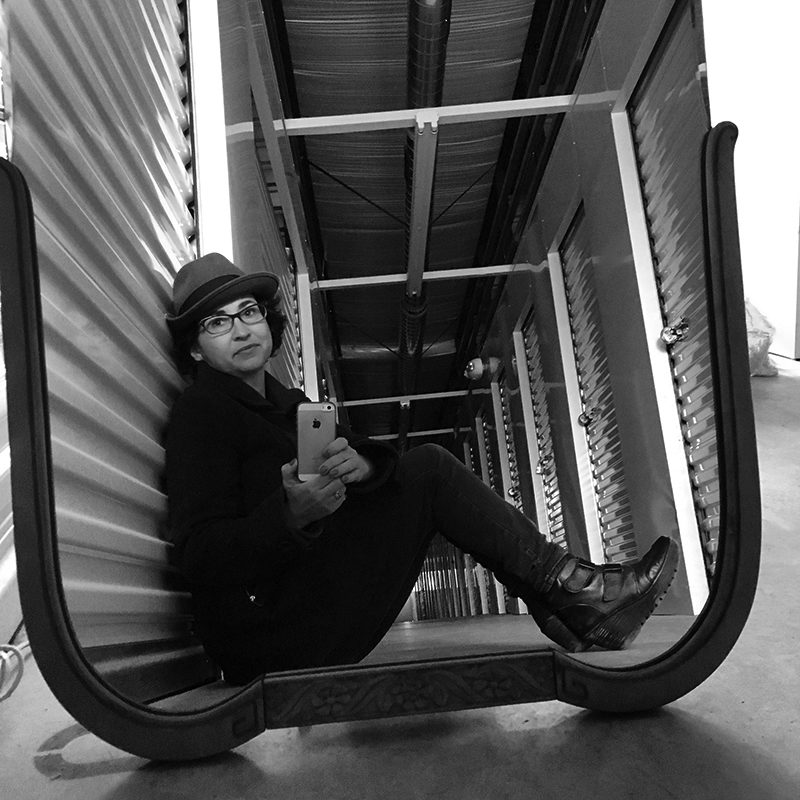 Self Portrait, Dorie Hagler
Self Portrait, Dorie Hagler
Julia Wilson: Can you start off by telling us a little about your background in photography and social activism? How do the two intersect in your work?
Dorie Hagler: My path has not been direct and, hopefully, when the dots are connected, it will all make sense. In college I studied Political Science and Film. My goal was to make social issue documentaries. However, the film program at the University of Colorado (where I went to school) was more geared toward feature-film making. My first internship was on a Made-For-TV movie being produced in Denver and honestly, you would have had to pay me to sit and watch the sorts of projects I was working on.
The whole story gets a little confusing, but essentially I got disillusioned with the film industry and joined the Peace Corps. I served as a volunteer for two years in Guatemala and while I was there, I rediscovered the power of storytelling with still images. When I returned from the Peace Corps I got a job as a staff photographer in Taos, NM and I lived there for 20 years. I like to say that I did “dirt road” photography rather than street photography. After twenty years in a small town in a not-so densely populated state, I had become a big fish in a small pond.
Then in 2011 I moved to NYC with my two daughters and their father. I had to start all over – no one knew me in NYC and the freelance market here is really saturated. In New Mexico The New York Times and The Chicago Tribune were calling me but in New York, it was a different story. However, at the same time, I realized there are people and stories and photos to be made everywhere. So I started making portraits of people I would meet on the street or on assignments, and afterward I would look at the photos and think, “I’d really like to know their story.” And I seem to be one of those people that other people can easily talk to and share their stories – so if I’m waiting in line or on a bus, I have the ability to have wonderful conversations with complete strangers. And I wanted to put those two things together. But… this was also when Humans of New York was blowing up on Instagram, and part of me thought, “Dammit, Brandon got there first.”
But the idea stuck with me and started getting more and more distilled. I was also sensing the energy growing around feminism and women’s issues. I am raising my daughters in a world where women are not always listened to or valued or paid equally or paid attention to in gym class. And when they needed to research papers on women in history, it was the same list of women. Believe me I have nothing but admiration for Eleanor Roosevelt and Rosa Parks, but everyday women are heroes too. So I began thinking “Don’t their stories deserve to be told, to be witnessed?” The best part is, is that I didn’t even need to pitch this idea to anyone – I could just publish it myself on Instagram. The only cost is time. When Hillary Clinton announced her candidacy, I decided it was now or never.
This is the project that has brought together so many of my goals as a visual storyteller. I am a witness, a photographer, an advocate. If I could just go out in the world everyday and meet women and feature them on me&EVE it would be wonderful. And honestly, I think it would be wonderful for the world as well. Because each time I spend 10 minutes focusing on my subject, the world changes a tiny bit for the better. Those few moments of connection do make a difference.
I kind of see it like I’m throwing pebbles in the pond of social justice. Each story is a new pebble, whose ripples grow larger and larger.
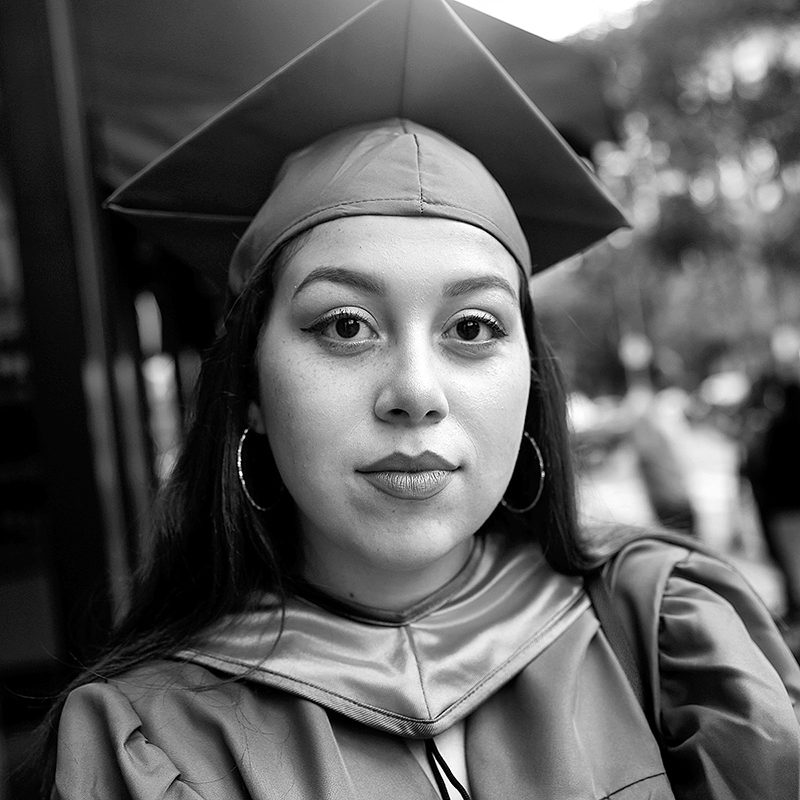 Angelina Cubero, me&EVE
Angelina Cubero, me&EVE
“I have been on birth control. Right now I am doing the Depo shots but everytime I am on this medication I have anxiety. It’s one of the side effects. Once I had to quit my job right on the spot because I was feeling so anxious and overwhelmed. I took longer to graduate from High School and from college because the anxiety got in the way. But I graduated, I did it. And now I will be getting off this medication.” – Angelina Cubero just graduated from BMCC (Borough of Manhattan Community College) and will be headed upstate to New Paltz to study psychology.”
 Heather Lynn Sparrow, me&EVE
Heather Lynn Sparrow, me&EVE
“The birth and death of my son and the gratitude that I feel for the experience is what has influenced all of my work since his death. I documented one whole cycle of life and got to participate in it at the same time. When he was born the midwives slogged through the muddy clay to my house on the mesa. They braided my hair with ribbons and we sang him, Trempealeau, into the world. I photographed him as he came out of my vagina. And when he died a magnificent death of his own choosing, some of those same people gathered. We dressed in Victorian costumes and and I made Victorian death portraits of him. I photographed myself putting his body into the crematorium. This, was the first thing I really completed start to finish. Afterward I felt complete and totally empty.”
JW: That’s an incredible backstory. I can relate to this disillusionment you have experienced in the film and photography world. I know that platforms like Humans of New York have been accused of being exploitative rather than celebratory – I’d argue this is kind of exploitation is embedded in photography’s boards, especially when photographing “strangers” as you mentioned above. And it is up the to photographer to use the camera in a way to combat its inherent nature to objectify, or a give sense of “otherness.” That said, me&EVE, in my opinion, accomplishes this beautifully. I don’t look at your photographs as images or objects, but I see your subjects as people. And I think this quality I find in your photography to be rare, especially in the age of social media. This is especially interesting to me, considering the fact that you switched from moving images and sounds, to still imagery and text, to tell the stories of these women.
With all that said, and to throw some art jargon at you: How does form meet content in your work, or in other words, how do your technical and situational choices stand true to the personal relationships that you develop with the women you photograph? Moreover, do your relationships with them extend after you take their picture?
DH: Wow. Thanks for your kind words about the project. I do my best not to make my subjects the “other.” It’s funny just today I was in a waiting room and picked up a magazine whose cover was about “Powerful Women” and the article was featuring Kamala Harris and Barbra Streisand and I thought to myself, “It isn’t hard to be powerful when you have a large audience.”
Sure, it is hard to get to the place where you have a large audience but when I hear the term “powerful woman,” I think about Dona Juana, a woman I worked with in Guatemala who had ten children and sent them all to school to become teachers. She was illiterate and now at the age of 70 is learning to read and write. That is a powerful woman. It’s her daughter-in-law, Dominga, who inspired me to do me&EVE and her story is really incredible and the project is dedicated to her.
In terms of form and content – I really have been struggling with this. On the one hand I want the photographs to be flattering because most women want to look good in their photograph, especially if it is alongside their answer to a question about their life. However, I am a photojournalist and the “snapshot” isn’t really what I am after. So stylistically I feel like I am more trying to satisfy my subjects and not satisfying my own artistic desires. However, I’ve come to accept that this project thus far has not been about “great photography” but is instead greatly about connection and about how one person can make a difference in the lives of others.
The majority of the women on the site are people who I randomly meet. Some are friends of mine and some are people who I know or work with professionally. Every once in a while, I will come across someone who has some sort of “celebrity” status and ask them if I can feature them, for example Cindy Gallop. And yes, I have stayed in touch with some of them. I’ve become friendly with my post office carrier who I featured. There’s a woman I met who was selling cookies in the subway station and I run into her from time to time, so I know my feature helped her make some connections and sell some cookies to people out of state. I featured a woman who worked at a weWork and she said our conversation was a turning point in her life. Megan Dinsmore said because of being on me&EVE she was able to talk about the sexual abuse she experienced and to tell her story. Many of the women who I photographed for this project now follow the project and we stay in touch that way. I am told often that this project has inspired people, that what I am doing somehow inspires people and for that I am super grateful. I think more than a pulitzer or a Guggenheim Fellowship or to have a top photo editor call me up and give me some fantastic assignment, I’ve wanted to know that somehow I’ve made a difference with my camera. And this project, even with portraits that are not always stellar has given me what I’ve always wanted.

Heather Malone, me&EVE
“Being from Brooklyn, I’m outspoken and I speak my mind. Everything I’ve gone for in my life, I’ve gotten. Just this week, I got a job with the government.”
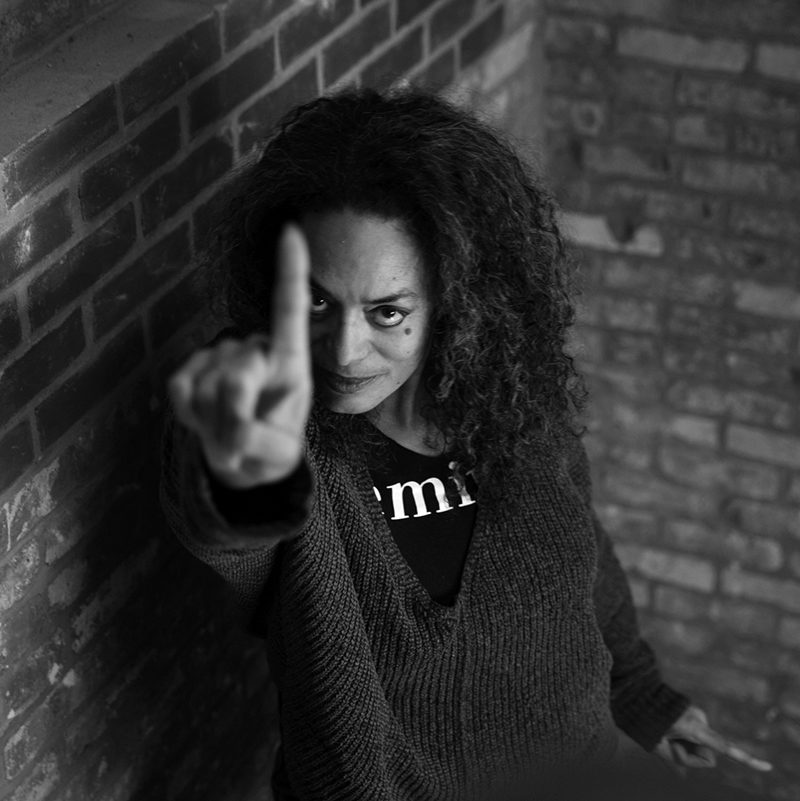 Aly Palmer, me&EVE
Aly Palmer, me&EVE
“Feeling the rage and despair after Trump was elected and hearing there was a protest planned for D.C. and knowing that too many women – without means, without freedom or with too many responsibilities to drop everything and run off to a rally would be left out of expressing collective rage broke my womanhood heart. That’s when I realized there needed to be a protest for all women and girls because feminism is collaborative by nature. Women don’t need leaders we just need organizers because we all need equal rights, representation, justice and opportunity. So I started 1at1.org so that for one minute around the globe women can unite. In 2017, 500,000 women and allies participated. This Saturday at 1pm we call for women and allies to rise again in protest of the Trump shutdown that disproportionately effects women and especially lower income women of every race. This is how we put our voice where our vote wasn’t enough.” Aly Palmer is a member of the band BETTY, an activist and the founder of 1at1.org. For more information about Saturday’s event visit 1at1.org
JW: I think that is what can be so beautiful about photography; like you mentioned above, It doesn’t always have to be about the end result or final image, but rather photography working as a tool, which allows access to people and places one might not normally approach on any given day – or about the subsequent experiences and processes that go hand-in-hand with image-making itself. That said, I think your regard and respect concerning how your subjects would want to be portrayed to illustrate their own stories, undoubtedly comes forth in the final portraits, which in my opinion, visually strengthens me&EVE’s mission: to empower women with words and photography.
And now that we’re speaking of empowering women with photography – can you tell us more me&EVE’s $5000 photography grant that you are offering – its backstory and its future?
DH: Yes interestingly – I have come to realize that with regards to me&EVE, I am using my camera as a tool for connecting to women and it is more about the interaction than the outcome with regards to the portrait. That said I am still mulling over in my mind how I can do both.
In terms of the $5,000 Award, I just felt like something had to be done. I have very little patience with my own complaining. Or rather I am far more energized when I do something rather than complain or be cynical. It is why I joined the Peace Corps – I was tired of hearing myself complain about the economic and social injustices in the world. I guess it’s that whole idea that if I am not trying to be part of the solution than I may be part of the problem.
In 2017 when I was 49 years old, I received a $5,000 grant from the MAE Private Foundation to support me&EVE. It was the first grant I had ever received. I’d been a finalist for grants, won awards, been chosen for large commissions, hung solo shows but never been awarded a grant. I live in NYC, I’m divorced, and I am raising two daughters. $5,000 doesn’t go that far – but the recognition and acknowledgement that this project was something that a foundation wanted to invest in was worth far more than the actual money. In a perfect world – I wouldn’t need that sort of external accolade, but in a society that outwardly deems your worth based on your salary, it is hard for photographers not to question their worth from time to time. At the same time I was continuing to see a growing number of grants/awards/portfolio reviews that were geared towards emerging artists and women under 35. I am a member of the Women’s Photo Alliance in NYC and the vast majority of my colleagues in the group are over 40. They are all enormously talented and their work is often overlooked. I think editors and curators like to find and nurture “young talent”, “emerging talent” and I think that is wonderful. But there are many talented women, including myself, who were not so fortunate to be emerging photographers at a time when the world was taking women and their viewpoint more seriously. I joked about calling the me&EVE grant the “We Are Not Dead Yet” Award.
And then last year my father, Michael Hagler, died. He had always been my champion – encouraging me from a young age to be creative. He was a very generous person not just with money but with time, his knowledge, his home, and the way he continually provided opportunities for others. The combination of knowing how fortunate I was to have a champion like my father, and having The MAE Foundation champion my project, inspired me to create a grant in honor of my dad because everyone deserves a champion.
I brought the idea of this award to Laura Pressley at CENTER and she was onboard right away and eager to create an award to address a demographic of photographers that has traditionally been invisible. The award will be part of CENTER’s other awards and along with the $5000, the winner will receive a professional development package that includes participation in Review Santa Fe and their work will be exhibited during the Review.
I have committed to find the funding for this award for the next three years. Though my hope is that it continues for much longer. When I announced the award in Santa Fe at 2018 Portfolio Review the enthusiasm was really quite unbelievable. Women and men came up to me all week-end thanking me creating the award. Some of them were crying and said things like,
“Thank you for seeing us. Now I don’t feel so invisible.” So I think in the same way I felt something brewing before I started me&EVE. I think I knew that I wasn’t the only woman over 40 who felt invisible. I feel super fortunate to be able to provide an opportunity and to honor my father in this way. We are not normally taught to give money away. We are taught to earn it, save it, invest it, protect it, etc…but I think grants like this, or micro-philanthropy as I call it, create such positivity for everyone involved.
The winner does not need to make work that resembles me&EVE – they just have to be using their camera and their work to encourage social change. It would be great if they follow the project on instagram and see what I am trying to accomplish with me&EVE as a way to better understand the spirit of the award.
I’m thrilled that Kathy Ryan, Photo Director of The New York Times Magazine will be the juror for this inaugural award. The winner will be announced in March.
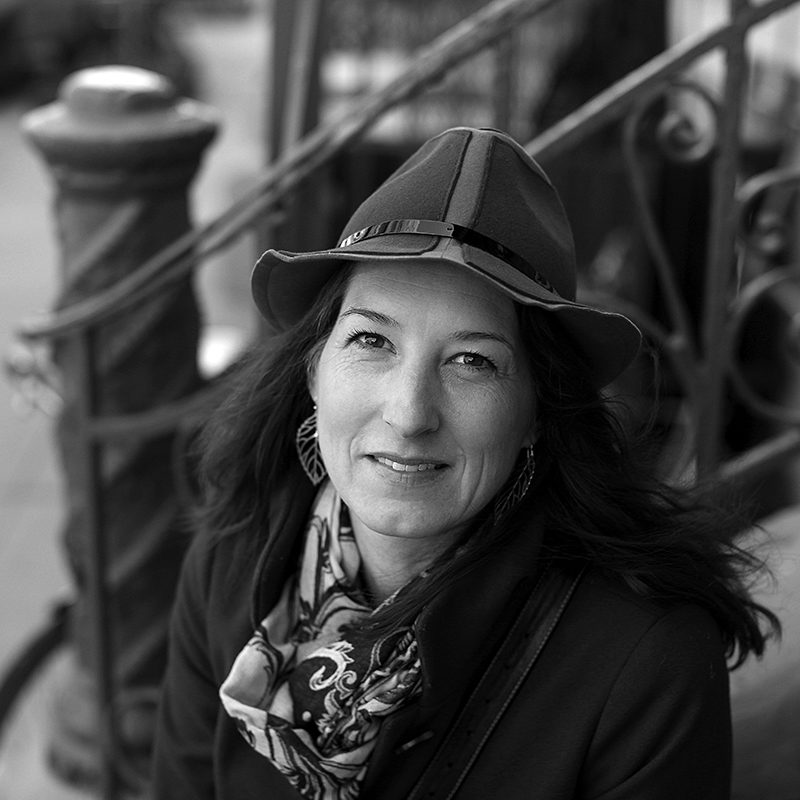
Lynee Welles, me&EVE
“I loved giving birth. I loved the experience of surrendering to the pain and the rhythm of my body that knows how to give birth. I did natural childbirth both times and both times I went in to the hospital at 8 am and delivered my babies by 3pm. It was all in a day’s work. I look back at those two births as the most incredible experiences, and no one can take that away from me.” Lynee is a Principal and Urban Planner at Williams and works where she is also the youngest and only female Principal.
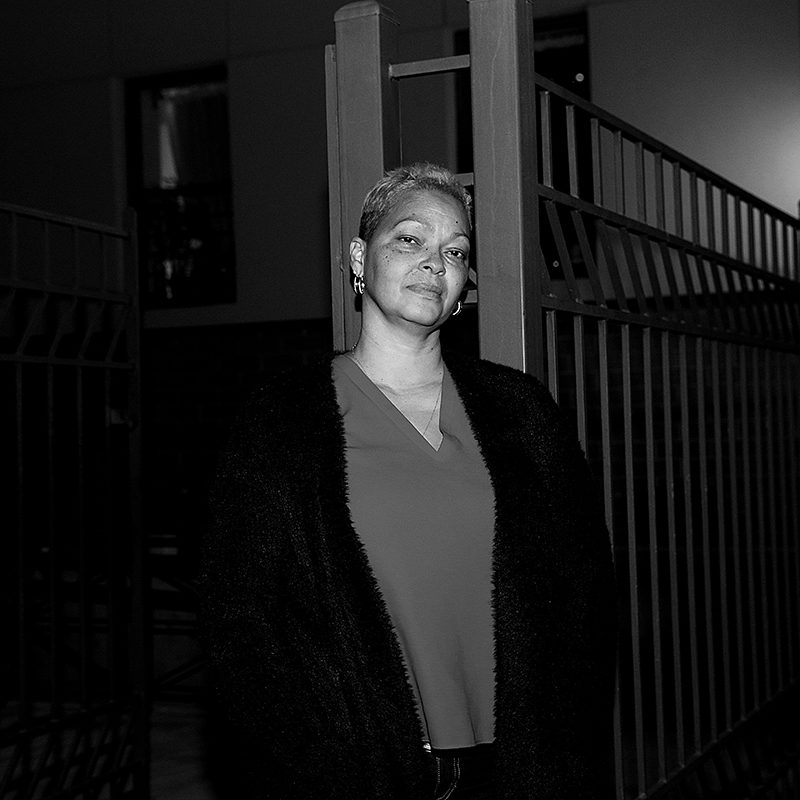
Donna Hylton, me&EVE
“Once, I wasn’t able to speak up for myself but now I can. I am the voice for all women who don’t have a voice or are not allowed a voice. Next week it will be 5 years since I was released from prison. And I am going to Washington to remind people that the women in prison are just like every other woman, mother, daughter, sister. But over 90% of women who are incarcerated are also victims of sexual violence. We have to talk about women and violence. Our very humanity is on the line.” Donna Hylton is a writer, speaker and activist about criminal justice.”
JW: This sounds like an amazing and rare opportunity for a sect of previously ignored or overlooked artists. So I have one more question concerning what you said above: that the work of the artist chosen doesn’t necessarily have to mimic the aesthetic of me&EVE, but simply promote social change. Herbert Marcuse, in his essay the Aesthetic Dimension: Against Marxist Aesthetics, wrote on the political power of art, stating,
“[…]a work of art can be called revolutionary if, by virtue of the aesthetic transformation, it represents, in the exemplary fate of individuals, the prevailing unfreedom and the rebelling forces, thus breaking through the mystified (and petrified) social reality.”
In this, Marcuse denies Marxist theory that art has to have a direct connection to the working class, denying art as ideology, as it liberates society directly by its transcendence of that reality. So with all that said, what does the promotion of social change look to you? For you, where does the power of art to liberate lie in the images you are drawn to, or believe are the most “successful”?
DH: Great Question. I have pondered this myself. What do I mean by social change? Again, I won’t be the one choosing the winning photographer but what I hope is that the woman who wins this award understands her own personal power and especially the power of photography to promote social justice. I guess I don’t have the perfect answer for that, but now that I am 50, I no longer wait for perfect answers before I act. I call it the “Fuck it Fifties.” In the past, I often let the “perfect” be the enemy of the “good”. Meaning my perfectionism or fear of “not being good enough” got in the way of just doing my work or having confidence in my ideas. Similarly, I could get caught up in all the what-if’s about making an award like this.
For example:
- What if, by making an age limit I’m just contributing to ageism or making it into an “us” vs. “them” scenario. See: “The Star Bellied Sneetches” by Dr. Seuss as a reference.
- Who am I to define what “social change” means.
- I get so annoyed at all the emails I get to enter this and that contest to be “seen” by this and that editor. $40 bucks here, $40 bucks there and it all adds up. Sometimes it feels like a feeding frenzy on the photographers need to be seen. And now – I am making another one of them. I am also now understanding the costs involved in administering an award and I am super grateful that I’ve worked with CENTER before and I know they are not one of those organizations taking advantage of photographers.
Or, rather than get caught up in not being perfect, I can just ‘get er done.”
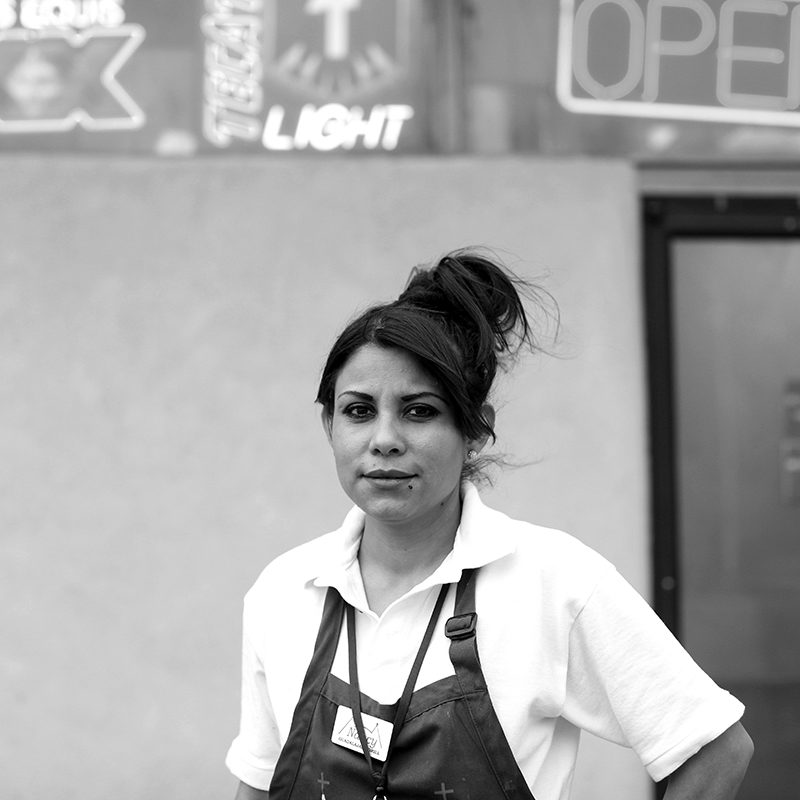
Nancy, me&EVE
“My daughters are 9 and 12 years old. I moved here from Mexico eight months ago so that I can work and send money home to them. I’m a single mother and I can earn more money here. I’m sad without them but I will stay and work for as long as God allows me to.” – Nancy is a single mother from Mexico who works as a waitress in a Mexican Restaurant in New Mexico. In order to protect Nancy from deportation I am not publishing her full name or the name of the restaurant.”
JW: I really love what you say about perfectionism, and not knowing all the answers – that not only is it OK but its inevitable, and good, and that we, as artists, can’t let that stop us from working, or creating. And the work we make, and the projects we create will always come with a stream of “What If’s” – and that we can’t and shouldn’t let those hold us back. Although I am 27 years old, I also fear obsolescence. And although your grant falls out of my age demographic, I am still incredibly excited for you, and to see the outcome. I’ve worked at places like the Santa Fe Photographic Workshops, namely Susan Burnstine’s Personal Narrative Workshop, or Mary Virginia Swanson’s Marketing Workshop, where I met so many incredible artists over 40 who were doing everything in their power to be heard, seen, and taken seriously – still fighting the good fight.
So before we close, can you tell us how readers can apply to the grant, and/ or support me&EVE? And in addition, do you have any last words or advice to readers and artists young and old, from a woman who has dedicated her life, work, and passion to the medium of photography?
DH: The link to the award is https://visitcenter.org/me-and-eve-award/. Submissions will be accepted starting later this month (January).
You can support me&EVE in a few ways.
- Please follow @meandeve on instagram. I don’t love chasing “followers” and I don’t love the social media game HOWEVER it is much easier to keep this award going for years to come and have photography stores/brands support the winner with gear and gift cards when the project has a large following.
- Share the link to the award https://visitcenter.org/me-and-eve-award/ – it’s a new award and I want women to find out about it.
- If you are interested in offering financial support for following years or your business is interested in getting involved, please email me dorie@doriehagler.com.
- If you know any woman that would benefit from having the opportunity to be seen and heard by being featured on @meandeve please put me in touch with her.
As for advice – I always feel my best advice to others comes from what I have learned from making mistakes. What this tells me is making mistakes is both worthwhile and worth sharing so don’t avoid making mistakes.
The best two pieces of advice I was ever given about photography were:
- “Everyone will have an opinion about your work and they are all wrong.” – meaning your own opinion about your own work is what matters most.
- Don’t make excuses.
Lastly – I would just say, go shoot. Do your thing. Most of us who are photographers feel the most alive when we are making images. So go do it.
To view more of me&EVE and Dorie’s work please visit her website.
To apply for the me&EVE award please visit CENTER’s website.